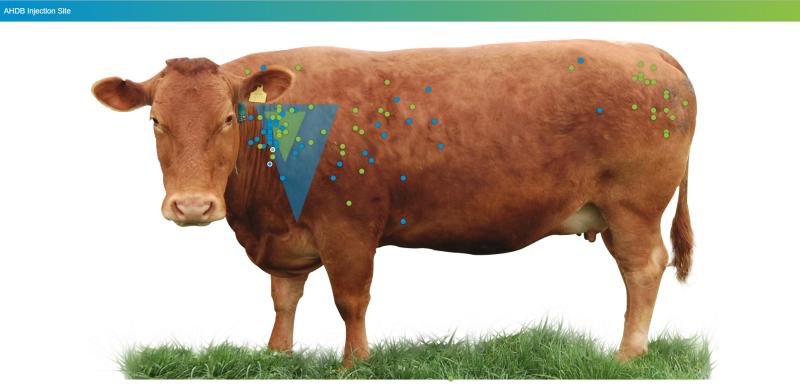
Farmers may be losing money by incorrectly injecting livestock and damaging carcase value, a survey has revealed.
Incorrect injections can lead to the formation of lesions, which subsequently leaves farmers financially worse off.
At last month’s Beef Expo event, AHDB Beef & Lamb invited farmers to its stand to demonstrate where they would inject their livestock.
The interactive exhibit showed that an overwhelming amount of participants indicated incorrect injection sites.
With six per cent of beef carcases slaughtered in the UK estimated to have injection site lesions, farmers could be facing large financial losses as the lesion and surrounding tissue must be trimmed out by the abattoir before being weighed.
Bad practice could also be reducing the quality of the meat, as well as leading to animal welfare implications.
Katie Thorley, AHDB Beef & Lamb Knowledge Transfer Senior Manager said producers could be losing money simply by not injecting in the correct place.
“Injections should be carried out in the neck of the animal, where the less valuable cuts are located, as well as in a dry and clean area,” Ms Thorley said.
When medicines are required, AHDB urges farmers to use as little as possible but as much as necessary, and read the product datasheet. This guidance falls in line with the government’s aim to reduce antibiotic usage by 20 per cent by 2018.
“It’s also best practice to replace needles as frequently as possible to reduce the risk of abscesses forming. If injecting a large number of animals, the same needle may be used for up to 10 animals and then must be changed,” she said.
